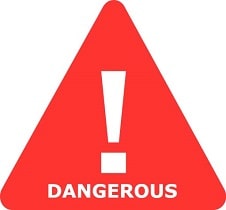Is Paclitaxel Safe in Breastfeeding
Question
I am a breastfeeding mother and i want to know if it is safe to use Paclitaxel? Is Paclitaxel safe for nursing mother and child? Does Paclitaxel extracts into breast milk? Does Paclitaxel has any long term or short term side effects on infants? Can Paclitaxel influence milk supply or can Paclitaxel decrease milk supply in lactating mothers?
Paclitaxel lactation summary

- DrLact safety Score for Paclitaxel is 7 out of 8 which is considered Dangerous as per our analyses.
- A safety Score of 7 indicates that usage of Paclitaxel may cause toxic or severe side effects in breastfed baby.
- Our study of different scientific research indicates that Paclitaxel may cause moderate to high side effects or may affect milk supply in lactating mother.
- Our suggestion is to use safer alternate options rather than using Paclitaxel .
- Usage of Paclitaxel is in contradiction to breastfeeding hence if it is must to use Paclitaxel and there is no better alternative available then breastfeeding shall be stopped permanently or temporarily.
- Score calculated using the DrLact safety Version 1.2 model, this score ranges from 0 to 8 and measures overall safety of drug in lactation. Scores are primarily calculated using publicly available case studies, research papers, other scientific journals and publically available data.
Answer by Dr. Ru: About Paclitaxel usage in lactation
Paclitaxel is a taxane with antimitotic properties originally derived from the bark of the Pacific yew (Taxus brevifolia).Indicated for the treatment of various cancers (breast, ovarian, lung, pancreatic).Administered intravenously; a dose generally every 3 weeks during a number of rounds determined according to protocol. Some types of cancer require weekly doses (EMA 2016, AEMPS 2012). Because it is very lipophilic, it is excreted in breast milk in significant amounts. At 316 hours (13 days) after the infusion, detectable levels were no longer found in breast milk (Griffin 2012). There are two different pharmaceutical forms of paclitaxel, the conventional one (AEMPS 2012, Bristol 2011) and the albumin-bound nanoparticle (EMA 2016), with a very similar pharmacokinetic profile: high protein binding, high volume of distribution and a long half-life of around a day, the range being between 13 and 53 hours for the broadest conventional form (Bristol 2011), versus 12 to 33 hours for the nanoparticle form (EMA 2016). When it is possible to do so, detections in the milk of each patient to determine the total elimination of the drug would be the best indicator for resuming breastfeeding between two rounds of chemotherapy. It is known from pharmacokinetics that after 3 elimination half-lives (T½) 87.5% of the drug is eliminated from the body; after 4 T½ 94%, after 5 T½ 96.9%, after 6 T½ 98.4% and after 7 T½ 99%. From 7 T½ plasmatic concentrations of drug in the body are negligible. In general, a period of five half-lives can be considered a safe waiting period before a return to breastfeeding (Anderson 2016). Depending on the pharmaceutical form of paclitaxel and taking as reference the longest recorded T½, these 5 T½ would correspond to the conventional form of paclitaxel at 11 days and that of nanoparticles at 7 days. Expert authors recommend waiting 6 to 10 days (between 6 and 10 T½) after the last dose to restart breastfeeding. Meanwhile, express and discard breast milk regularly (Hale 2017 p.742). Some chemotherapeutic agents with an antibiotic effect can alter the composition of the microbiota (cluster of bacteria or bacterial flora) of the milk and the concentration of some of its components (Urbaniak 2014). This possibly occurs temporarily with subsequent recovery, without any adverse effects being reported in breastfed infants.
Answer by DrLact: About Paclitaxel usage in lactation
Most sources consider breastfeeding to be contraindicated during maternal antineoplastic drug therapy.[1] Based on limited data, paclitaxel appears to be excreted into milk in relatively large amounts. It might be possible to breastfeed safely during intermittent therapy with an appropriate period of breastfeeding abstinence, but the duration abstinence is not clear. In one case, paclitaxel was detectable in milk for at least a week, but not at 13 days after a dose of 30 mg per square meter. The manufacturer recommends that breastfeeding be discontinued during paclitaxel therapy and for 2 weeks after the last dose. Chemotherapy may adversely affect the normal microbiome and chemical makeup of breastmilk.[2] Women who receive chemotherapy during pregnancy are more likely to have difficulty nursing their infant.
Paclitaxel Possible Effects in Breastfeeding
A telephone follow-up study was conducted on 74 women who received cancer chemotherapy at one center during the second or third trimester of pregnancy to determine if they were successful at breastfeeding postpartum. Only 34% of the women were able to exclusively breastfeed their infants, and 66% of the women reported experiencing breastfeeding difficulties. This was in comparison to a 91% breastfeeding success rate in 22 other mothers diagnosed during pregnancy, but not treated with chemotherapy. Other statistically significant correlations included: 1. mothers with breastfeeding difficulties had an average of 5.5 cycles of chemotherapy compared with 3.8 cycles among mothers who had no difficulties; and 2. mothers with breastfeeding difficulties received their first cycle of chemotherapy on average 3.4 weeks earlier in pregnancy. Of the 9 women who received a taxane-containing regimen, 7 had breastfeeding difficulties.[4]
Alternate Drugs
Trastuzumab(Unsafe)
Dacarbazine(Dangerous)
Imatinib(Unsafe)
Thioguanine(Dangerous)
Azelaic Acid(Safe)
Erlotinib(Unsafe)
Cladribine(Dangerous)
Vincristine(Dangerous)
Dasatinib(Unsafe)
Tamoxifen(Dangerous)
Letrozole(Dangerous)
Nilotinib(Unsafe)
Exemestane(Dangerous)
Ipilimumab(Unsafe)
Mitoxantrone(Dangerous)
Cetuximab(Unsafe)
Mercaptopurine(Safe)
Carboplatin(Dangerous)
Dactinomycin(Dangerous)
Paclitaxel(Dangerous)
Hydroxyurea(Low Risk)
Fluorouracil(Dangerous)
Etoposide(Dangerous)
Alemtuzumab(Low Risk)
Nivolumab(Unsafe)
Doxorubicin(Dangerous)
Rituximab(Low Risk)
Vinblastine(Dangerous)
Cyclophosphamide(Dangerous)
Bevacizumab(Low Risk)
Gemcitabine(Dangerous)
Bleomycin(Dangerous)
Docetaxel(Dangerous)
Cisplatin(Unsafe)
Pazopanib(Unsafe)
Vinorelbine(Dangerous)
Busulfan(Dangerous)
